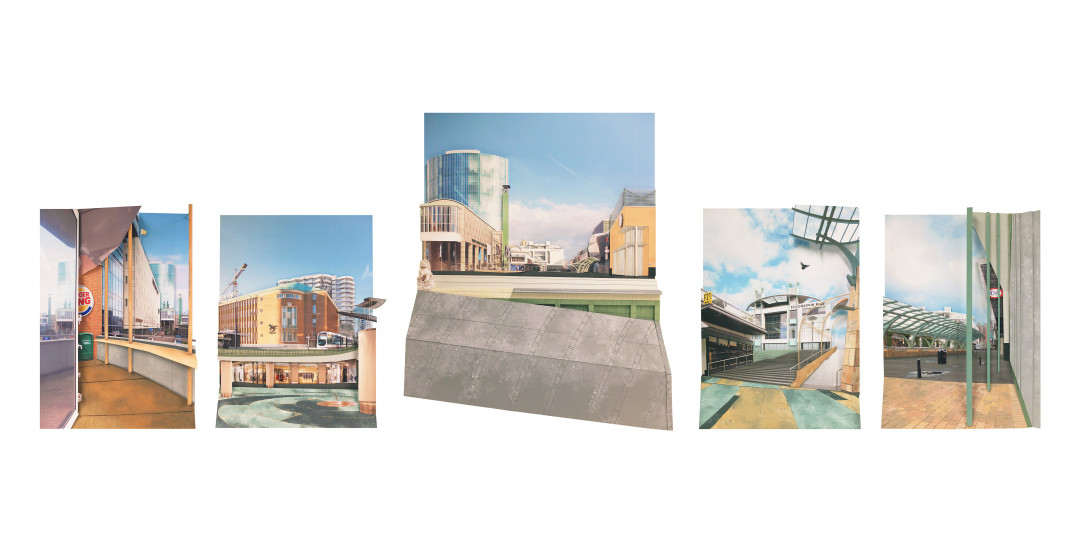设计说明:鹿特丹顿悟

下载所需积分: 4
年份:2021 学校:Rotterdam University of Applied Sciences 课题:Description by Design: Rotterdam Epiphanies 设计师:Mahaut Dael, Michal Dlugajczyk 指导老师:Marius Grootveld, Lara Schrijver, David de Bruijn, Renske van der Stoep 基地地址:荷兰 | 鹿特丹 类别:城市、再利用、购物、休闲、改造
顿悟现象构成了本项目设计方法的基础。作为鹿特丹市中心的案例研究,该过程导致了一系列干预措施,即激活公共空间空间意识的手段
今天,城市环境的忙碌转变和饱和导致缺乏认同感。空间品质通常是不可读的,看不见的,因此越来越不受欢迎。在当代建筑领域中,该项目提供了一套替代设计工具,揭示了现有公共空间的潜力,旨在加强其意义和占用。 “设计描述”侧重于通过使用设计作为描述工具来发现特定位置的过程。然后,设计师的主观性丰富了对现有环境及其所有层次的初步认识。作为一名超现实主义考古学家,他挖掘隐藏的构图和细节以发展平行现实。通过拼贴和历史类比的帮助,这个地方的第二种性质被置于聚光灯下。这些类比激发了集体记忆并形成了位置物理转换的模式。尽管该设计使用了外部参考框架,但该位置的内部内容和现有组件是其物化的成分。日常用户,“每个人”,成为意义和体验、现实和解释之间的中介。在鹿特丹纯粹的商业中心,出现了“鹿特丹顿悟”,这是对环境的认可,同时也是一个进步的象征。设计的干预措施位于 Coolsingel、Hoogstraat 和 Beurstraverse 之间的交叉口,源于设计师对现代身体中看不见的中世纪成分的认识。这种矛盾的身份是通过对现有作品的操纵以及对特定场地材料和符号的处理来揭示的。用户暂时离开商业环境,将其视为一个地方,以及一个挪用和使用的机会。特定的和日常的,争论的和推测的,这个项目的组成部分被放置在对抗中,以更新和丰富城市环境的现有内容。正如超现实主义者通过系统地重新排列其组件来应对他们时代陈旧的内容一样,设计师能够产生影响当代观众的惊人启示,并通过这种方式认识到现有环境中不断更新的潜力加载和重新加载有意义的地方。
The phenomenon of epiphany forms the basis for the design method presented in this project. Applied as a case study in the heart of Rotterdam, the process leads to a series of interventions, means of activation for spatial awareness in the public space
Today, the hectic transformations and saturation of the urban environment lead to a lack of identity. The spatial qualities are often unreadable, unseen and therefore less and less appreciated. Within the contemporary field of architecture, this project presents an alternative set of design tools exposing the potential of existing public spaces with the aim of strengthening their meaning and appropriation. "Description by Design" focuses on the process of discovering a specific location by using the design as a description tool. The initial recognition of the existing environment with all its layers is then enriched with the subjectivity of the designer. As a surrealist archaeologist, he digs up hidden compositions and details to develop a parallel reality. By means of collages and with the help of historical analogies, a second nature of the place is put in the spotlight. The analogies stimulate the collective memory and form the pattern for the physical transformation of the location. Although the design uses an external frame of reference, the internal content and the existing components of the location are the ingredients of its materialization. The daily user, 'everyman', becomes the intermediary between meaning and experience, between reality and interpretation. In the purely commercial center of Rotterdam, the "Rotterdam Epiphanies" appear, moments of recognition of the environment which is at the same time difficult to read and an icon of progress. The designed interventions, located at the crossing between Coolsingel, Hoogstraat and Beurstraverse, result from the designer's recognition of unseen medieval ingredients within a modern body. This contradictory identity is revealed through the manipulation of existing compositions and the treatment of site-specific material and symbols. The user turns away for a moment from the commercial environment and recognizes it as a place, and as an opportunity for appropriation and use. Specific and everyday, argumented and speculative, the components of this project are placed in confrontation to renew and enrich the existing content of urban environments. Just as the surrealists reacted to the worn-out content of their time through a systematic rearrangement of its components, the designer is able to generate striking revelations affecting the contemporary viewer, and in this way recognize the potential for constant renewal in existing environments loading and reloading places with meaning.